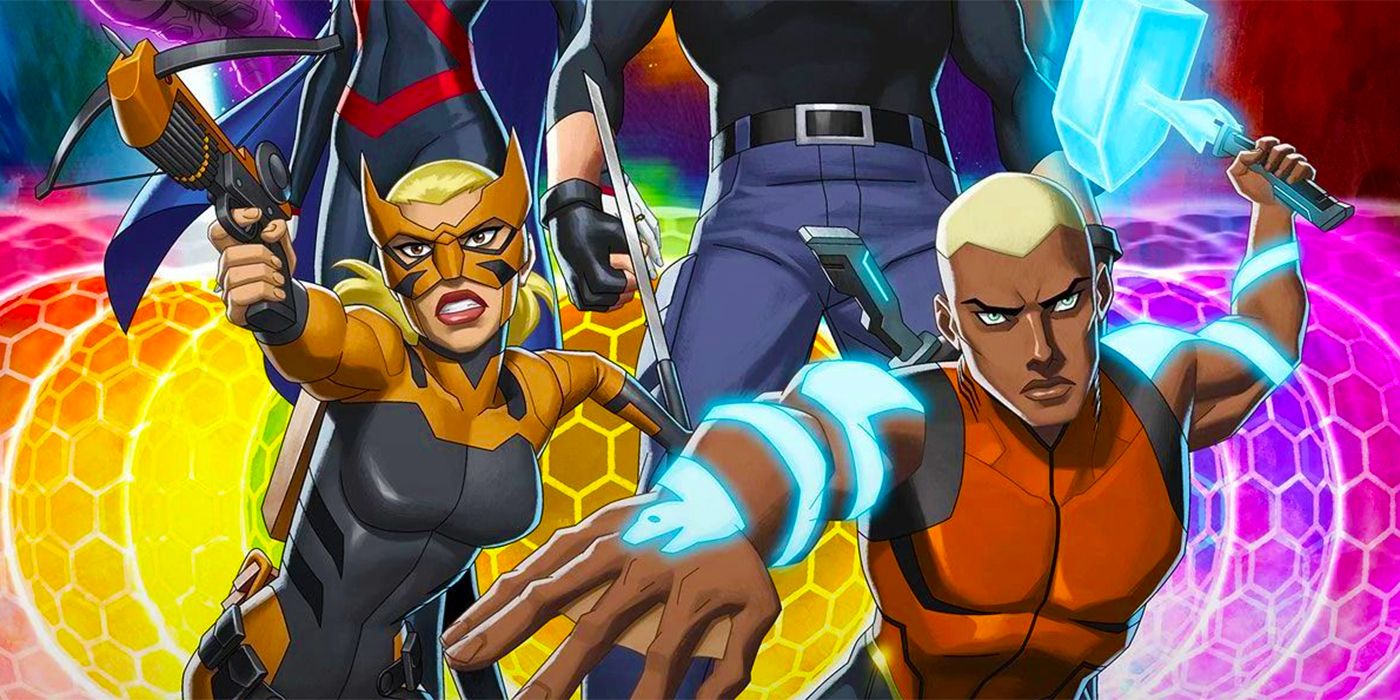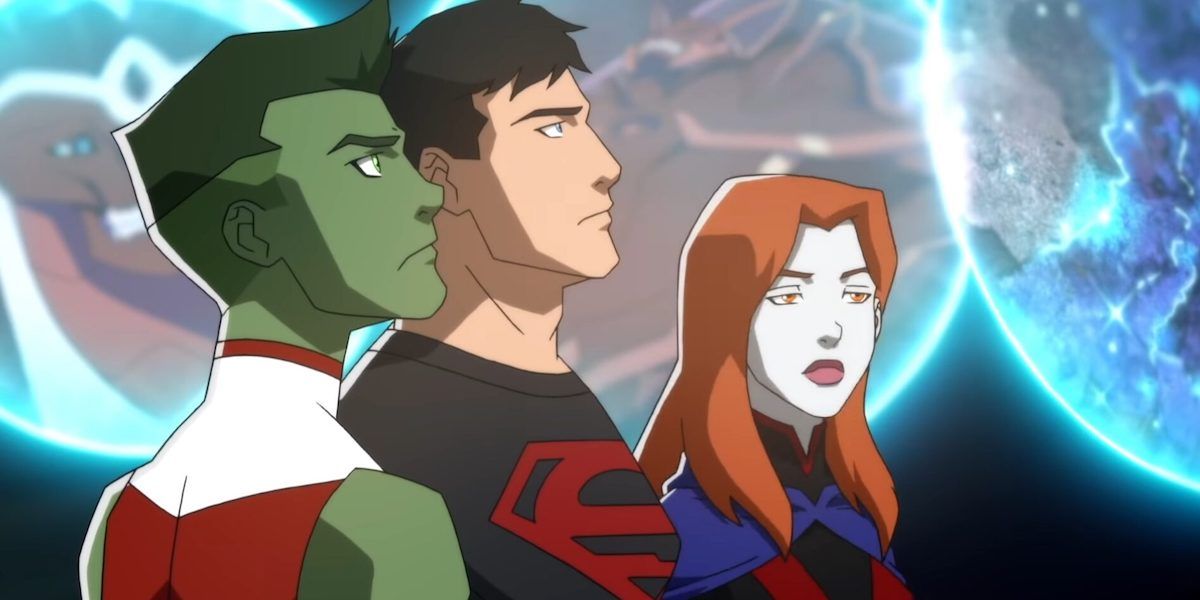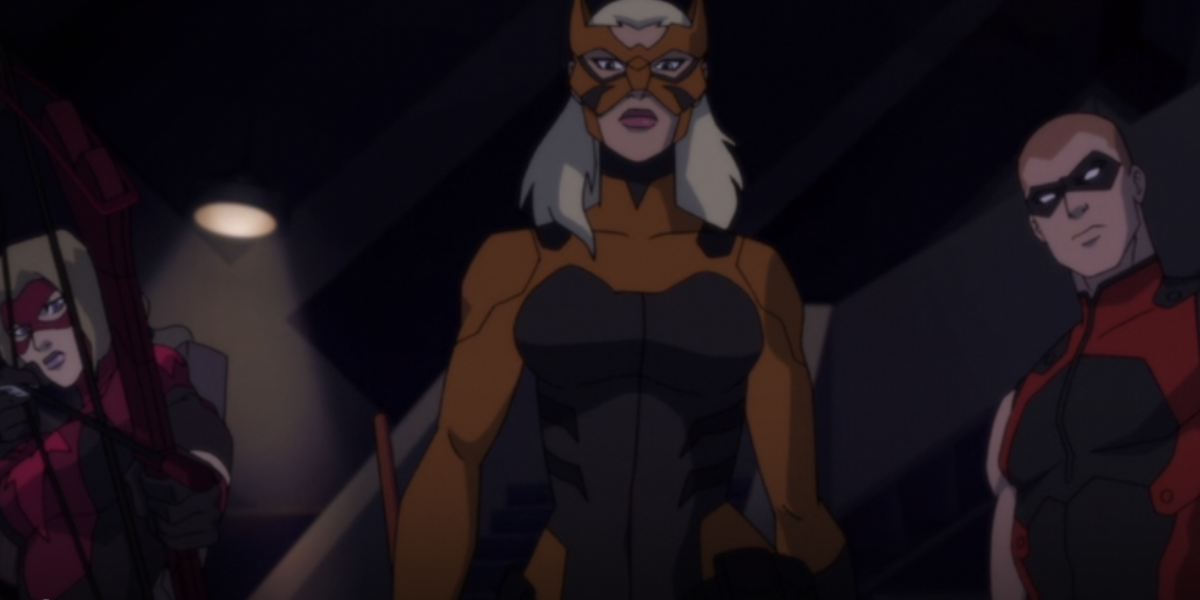
Canceled after two seasons on Cartoon Network, Young Justice found new life in the world of streaming -- thanks to a dedicated fanbase. The animated series takes place in a version of the DC Universe that ages and changes over the years as the heroes gain (and lose) allies. Young Justice Season 4, now streaming on HBO Max, focuses on different corners of the DC world and showcases its central cast contending with the dangers of living in a superhero world and the real world's societal hang-ups, unlike many similar superhero shows.
During an exclusive interview with CBR, Young Justice creators and showrunners Brandon Vietti and Greg Weisman shared what they're the proudest of creatively. They also discussed the origins of Season 4's structure and how they brought it to life.

CBR: The show has changed so much since Season 1 on Cartoon Network. What part of the show are you two the proudest of from a creative standpoint?
Brandon Vietti: That's a good question. It's hard to pick a single thing when you're crafting a show. There are so many different elements from picking up all these great threads that have been running through comics for years and getting to work with these characters. But there are the themes and topics that we're trying to weave in, plus trying to fold in some twists and turns because we're certainly working with the fact that many of our fans have expectations about what paths certain characters are going to take. Knowing that [fact], we try to create twists and turns that defy your expectations. It can be very hard to pick a single element of the show that I think is our favorite. I think Greg and I both really enjoy working with some of the more realistic themes that we're trying to weave into the stories.
I think our story is a collision between fantastical comic book stories, but also reality and the world around us. We try to fold in realistic textures because I think that's what happens in youth. The show is called Young Justice. There's a lot of coming-of-age stuff. I think that journey is that collision between your innocence in youth and a sudden confrontation with the complex realities around you. We're trying to really take some of those realities and fold them into the various character stories that we're tracking it in a very meaningful way that will hopefully help grow our characters further, but also maybe enlighten our audience, teach our audience or give them an experience that they may not get on their own through their day to day experience.
Greg Weisman: If there's one thing for me that I think I'm proud of it and sets us apart is the show's passage of time. The way the show deals with time, I feel, is fairly unique. There are a lot of television shows that work very, very hard to maintain their status quo. We work very, very hard to subvert the entire idea of that because that's not what life is like. So the idea where it's most starkly revealed is you look Dick Grayson in season one as Robin -- he's 13, and you look at him or you will eventually get to see more of him in Season 4 as Nightwing. That's a big jump across 10 years of screen time. In most shows, ten years later, he'd still be 13 year old Robin.
But we've allowed him to grow and evolve. Superboy, it's the same kind of thing. Superboy starts out as a sort of really angry, edgy clone of Superman who doesn't know what he is or who he wants to be and has evolved into one of our most zen characters on the show. But that's an evolution that takes place over time. That ability to take our characters forward like that and thus constantly change the paradigm of who they are and what the show is -- probably the thing I'm proudest of.
Superheroes as a genre really lend themselves well to blending real-life questions with really visually compelling stories. What makes Young Justice, the perfect place to discuss these heavy topics?
Brandon Vietti: My favorite thing about science fiction is it can be used to tell stories about ordinary things but from an extraordinary perspective. It allows you to take something that you already have an idea about, but it takes it apart and puts it back together again in an entirely different way, which can shed new light on it. So I think the superhero stories in general parallel or feed into sci-fi stories in that way. I think as you can tell, from both of our answers already, we're both very interested in reality and as a texture, and how do we fold reality into Young Justice? How do we tell great stories with that? I think, again, the reality is a texture.
I think that sets our animated series apart from a lot of the great animated superhero shows that came before us. It was a directive for us. We had come up with a way to try to separate ourselves cause it's very challenging. There's so much great animated DC content out there. That was a task that we set for ourselves. How do we stand apart? How do we make ourselves different? That certainly doesn't make things easier when you want to embrace realistic textures in your story and your design and your filmmaking.
These are all very difficult to achieve because I think you inherently know reality when you see it. You also know when it's wrong... but when it's fantasy, there are no rules. So you can just make it up as you go. It's been a group effort for us. We definitely need help. We reach out to various consultants for some of the realistic themes and textures and our artists weigh in as well. It's like a conversation. So it's been, I think, really good for the crew as well to sort of work through all of these different realistic textures and kind of work together to craft this world.

One of the most interesting elements of this season is that the show's scope has grown enough for there to be multiple mini-arcs, each telling their own unique piece of the overall story. Where did that concept come from -- was it planned from the start of the season or did it develop more over the course of production?
Greg Weisman: No, it was planned. We didn't stumble on it. It was a combination of factors. One thing is that from day one this was a DC Universe show but from the point of view of a core group of young characters. We were world-building, and the idea is just because we're showing you X story on screen, things are still progressing over in the Y in the Z category as well. Nothing's standing still because that is what life is like again. The reality is that we're in the middle of a pandemic and we're doing this now even more so than we were two years ago. [We're all in] our own little worlds, in our own little houses, in whatever home offices we have created for each other.
Meanwhile, other people are doing other things and the world is going on and all those things are interconnected. If in terms of the arc-ing, I think that was a combination of factors. One of them had to do with production, trying to make the show as easy to produce, because it's a hard show. We're not pretending it's not, it's big, it's immense. But if we do four episodes on Mars, we're getting the most bang for our buck out of our journey to Mars, right? If we just go to Mars for one episode, then we've got to create all of Mars. And then the next week we're creating all of something else. There's an honest attempt to make the show easier for our animators in Seoul, our storyboard artists here in Los Angeles, our designers, all that stuff.
But the reason to make it easier is so they can do their best work so that they can focus on their creative abilities to bring the most to the table and not have us throwing all ambitious log jams into the mix. So there is a pragmatic aspect to our choice this season to go the arc route, but it also plays out well with what we've done in the show all along, which is that on every front, the world is moving forward and our characters have to keep up. Things are coming to a head on Mars in the first four episodes. We're going to see that there's a big problem with the league of shadows in the next four episodes, and we're going to see that. We're just creating some cohesion here to help us out on the pragmatic side of things.
0 Comments